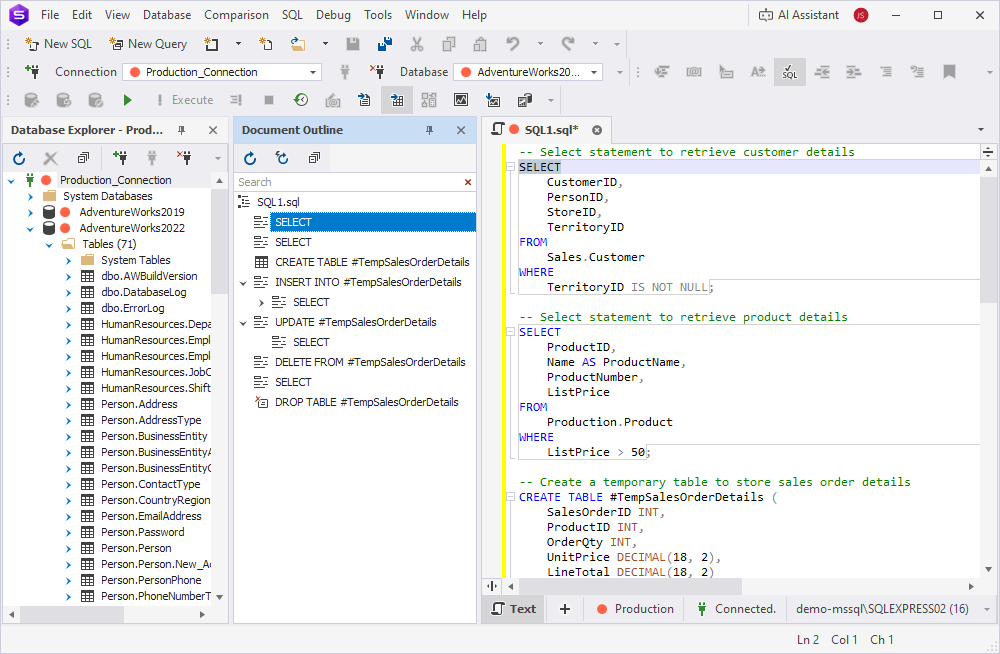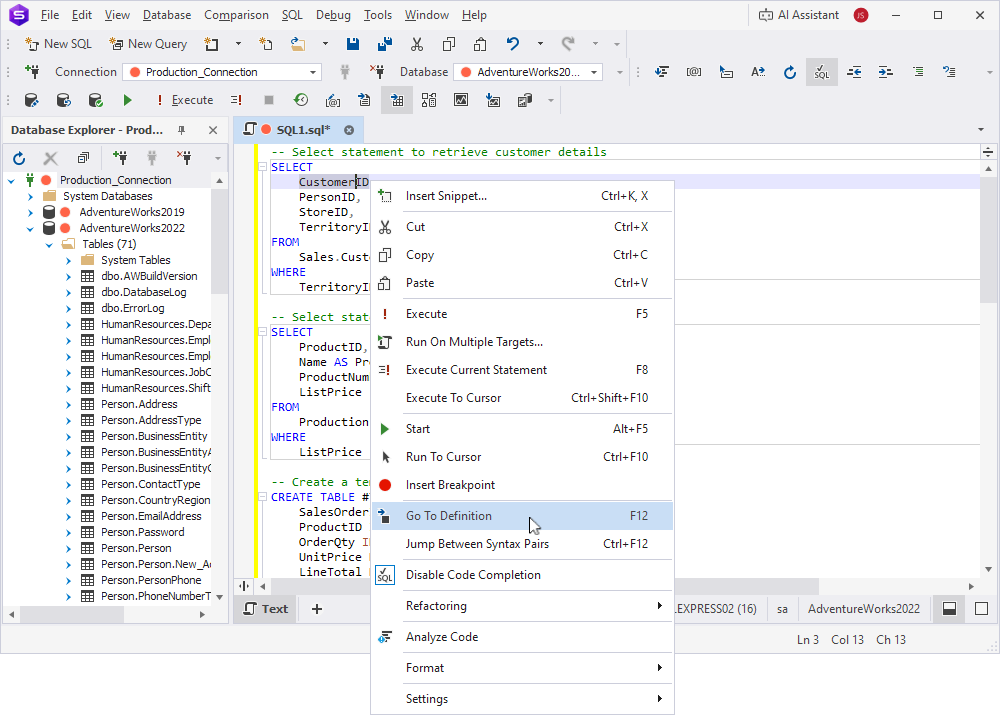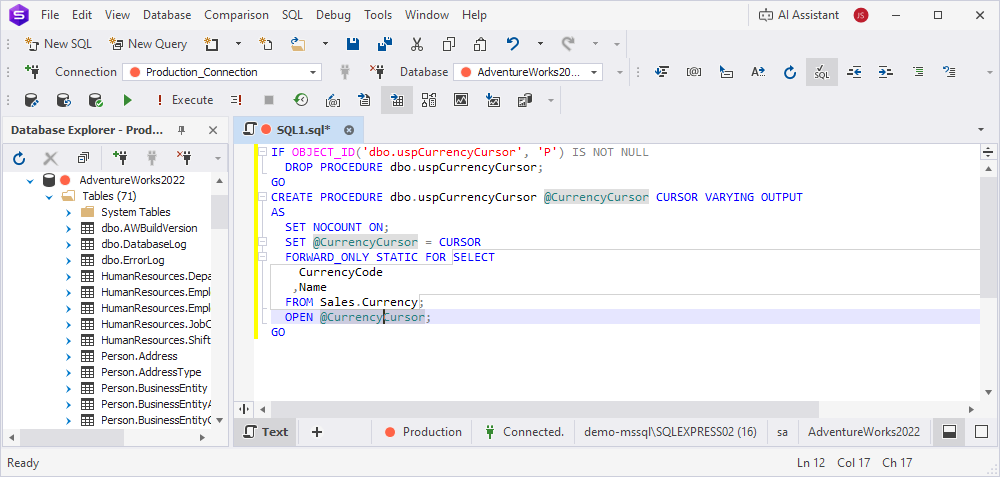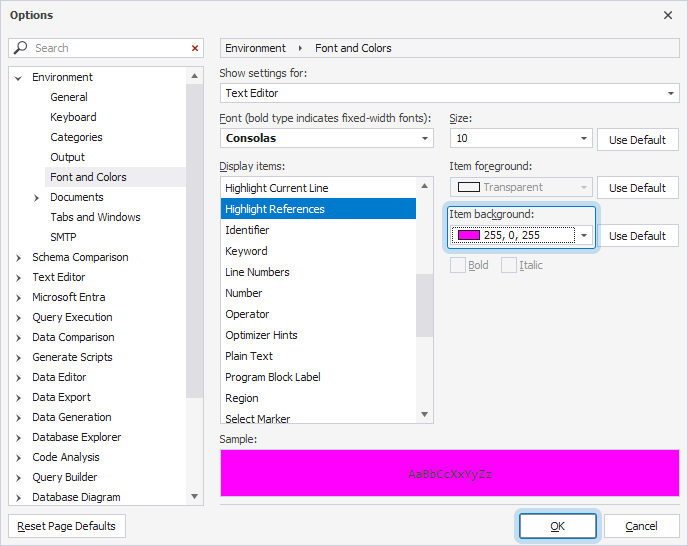Code navigation
dbForge Studio for SQL Server offers tools for navigating SQL code, such as viewing code structure, opening object definitions, highlighting syntax elements, and moving between statements. These capabilities help optimize your workflow and improve productivity.
Note
SQL scripts must be valid and error-free. Otherwise, the features described further won’t work.
View code structure
To see the current code structure, select View > Document Outline.
You can jump to any statement in the code by clicking it in the Document Outline pane, which makes navigating large SQL documents easier.

Open an object definition
To open an object defition, right-click the object and select Go To Definition, or press F12.

The object opens in Object Editor, where you can modify it visually—the underlying code is updated automatically.
Note
If an object exists only in the script and not in the database, selecting Go To Definition takes you to its declaration in the code.
Navigate between statements
Press Alt+PgUp or Alt+PgDn to move the cursor to the beginning of the previous or next SQL statement in the document.
Highlight all occurrences of a syntax element
Click a syntax element in a SQL document to highlight all its occurrences throughout the script. This feature is useful for identifying:
- Identifiers.
- Matching
BEGINandENDkeywords. - Matching
BEGIN TRYandEND TRYkeywords. - Matching
BEGIN CATCHandEND CATCHkeywords. - Matching
CASEandENDkeywords. - A column and corresponding values in
INSERTstatements.
The default highlight color is gray.

Change the highlight color
1. Select Tools > Options.
2. Select Environment > Fonts and Colors.
3. Under Display items, select Highlight References.
4. Under Item background, select the color you want.
5. Click OK.

Navigate between matching keywords
You can locate matching keywords in pairs such as BEGIN/END, BEGIN TRY/END TRY, BEGIN CATCH/END CATCH, and CASE/END in SQL statements.
Place the cursor on a keyword and press Crtl+F12 to jump to the other keyword in the pair.
For more information about CASE expressions, see Using the CASE Statement in SQL Server.
Navigate between columns and values in INSERT statements
In large INSERT statements, the Studio helps you identify which values correspond to which column, and vice versa.
Place the cursor on a column name or value and press Ctrl+F12 to move the cursor between the column name and its corresponding values.